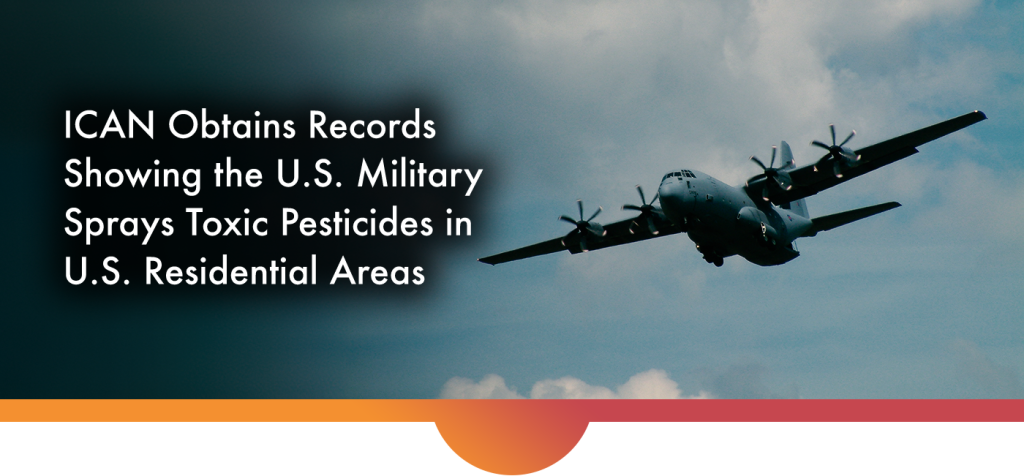

Concerned parents tirelessly defend their children from toxic chemicals coming from seemingly every direction—in food, cleaning products, furniture, toys, etc. But how many of us have considered whether chemicals are being sprayed from our skies while we sleep?
ICAN’s legal team recently obtained records through FOIA showing that the U.S. military sprays dangerous chemicals from airplanes over residential areas. The spraying is usually done at night (when insects are most active), so you likely wouldn’t realize that your home had been sprayed. It’s done by the U.S. Department of Defense (DOD), which has a specialized unit that is dedicated to spraying large areas of land (5,000 acres or more).
Lead Counsel, Aaron Siri, Esq., lays out the details here
According to its website, this military unit “conducts as many as 25 recurring annual missions on 12 military installations in nine states, and in some cases, over communities surrounding these DoD areas.” It uses airplanes that “are specially modified with spray arms and the MASS [Modular Aerial Spray System], which can carry a total of 2,000 gallons of insecticide, herbicide or dispersant. The agent is then disbursed out of spray bars under each wing, in 30-micron droplets.”
The documents also include the unit’s flight records which show where these military planes systematically sprayed, including large, populated areas in Texas, Louisiana, Virginia, Parris Island in South Carolina, and the City of Burlington in North Dakota, just to name a few.
The records also show that the pesticides killed mosquitos that were inside boxes inside of buildings. Incredibly, one flight path shows the planes intentionally avoided spraying areas with bald eagle nests. So, if the chemicals being sprayed are too dangerous for baby eagles, how are they affecting us?
These documents further reveal that the unit has sprayed more than 20 chemicals, mostly containing the highly toxic organophosphate pesticide Naled, which kills insects by destroying their central nervous system.
In humans, symptoms of pesticide poisoning include headaches, muscle twitching, nausea, diarrhea, vomiting, respiratory depression, seizures (especially in children), and loss of consciousness. Frighteningly, even if you don’t live in areas being sprayed, you may be exposed to Naled through your food, drinking water, and even clothing. In June 2020, the EPA recognized that food and drinking water are “anticipated exposure pathways” because Naled is sprayed on crops (almonds, broccoli, grapes, strawberries, cotton, and more), used in public pest control measures, and reaches groundwater sources of drinking water.
Rest assured that ICAN’s legal team is digging into this issue and has already sent multiple legal requests to the EPA—the agency tasked with protecting the air we breathe, the water we drink, and the soil we grow our food in—requesting scientific proof that the pesticides being sprayed do not pose a threat to our health or to the environment.
To support future legal actions like this, click here to donate.
